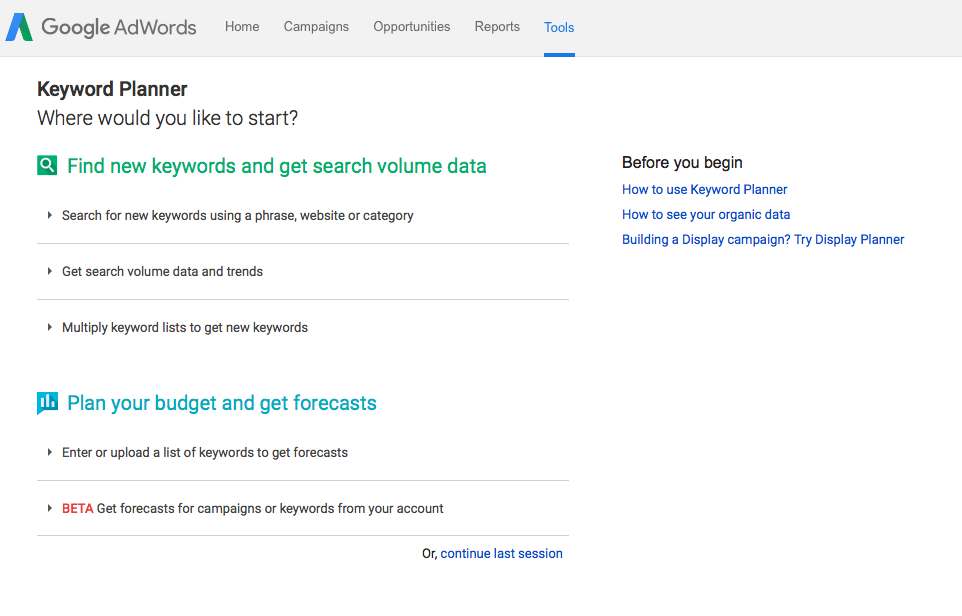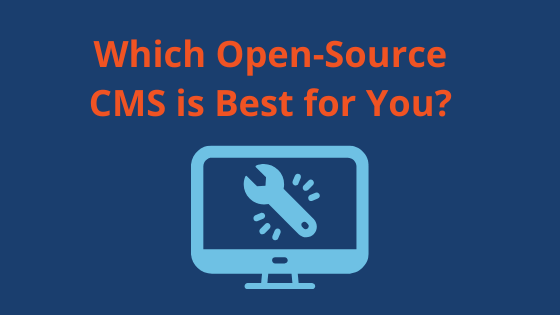
A site that simply exists on the internet isn’t enough. Hitting “publish” won’t be your last step. How will your audience find your site? Do they even know it exists? You have to let people know your site is live and make it easy for them to find. If you want your site to be successful, you have more work to do. Here’s what to do after creating a website:
1. Conduct Keyword Research
Search and email are the two most common internet activities. People are always searching for information online using different search engines like Google or Bing. You want people who search for relevant topics to find your site. For example, let’s say you built a site about herb gardening. You want people who search for herb and gardening terms to find your site, but how do you know what people are searching?

You can start by using a keyword research tool like Google Keyword Planner. Use this free keyword research tool to see what terms people are searching for in Google. Keyword planner will also tell you the search volume of each keyword. A keyword with high search volume like herb garden averaging over 12,000 searches per month is a good one to use in your web content. A keyword like victorian herb garden averaging only 10 searches per month has low search volume so it’s less likely to attract organic traffic. Organic traffic defines visitors arriving at your site via a search engine like Google, but it doesn’t include traffic from paid search ads.
Use your keyword research to inspire new content. Even low search volume keywords can help you get more traffic. Writing a blog on victorian herb gardens will still help your site’s visibility, even if it’s only for 10 people every month. Incorporating keywords into your website content (including image alt text, page titles, and meta descriptions) will help your audience find your site and improve your website traffic.
2. Set Up Google Analytics

If you want to know how many people are using and engaging with your site, set up Google Analytics. Google Analytics is a free tool and it’s relatively easy to install it on your site. You can use it to:
- Track how many people used your site
- How long they stayed
- How many pages they visited in a given period of time
- Determine if and where bottlenecks exist
- Calculate ROI
- Measure traffic from social media
- Compare data from month to month
- Create custom reports
Google Analytics can help you understand so much more about your audience and how they use your site. You can use this data to inform new content and generate more conversions. Whether you want people to read your blog, sign up for a newsletter, or make a purchase, Google Analytics will help your site be a success.
3. Optimize for Search Engines
Search engine optimization, or SEO, is essential to your site’s success, especially if you don’t want to pay for digital advertising. Start by incorporating keywords into your page titles, headers, URLs, image alt text, and meta descriptions. You may also want to make sure your web host isn’t slowing you down. Find a reliable web host to improve your page load speeds and get more organic search traffic. If you’re interested in learning more about how SEO can help you and how to implement it on your site, stay tuned for our SEO series.
4. Get Your Site Noticed through Social Media
Use social media to get noticed! It’s free to sign up for popular social platforms like Twitter, Instagram, Facebook, Pinterest, and LinkedIn. Figure out which platform is most popular with your target audience. Gardeners might prefer Pinterest and Instagram for example. They can find recipes for their freshly grown herbs or tips on how to tend their herb garden on Pinterest. Then they can share pictures of their thriving plants and delicious meals on Instagram.
You can do the same to promote your website! Start a Pinterest board and share your blogs about DIY herb gardens on it. You can post regularly about your topic on social and generate more traffic to your site for free.
5. Monitor Your Site’s Progress
Measure the progress of your website at regular intervals. Check Google Analytics every day to make sure people are still finding your site. Watch out for sudden dips or spikes in web traffic because it could mean something on your site isn’t tracking properly.
On a weekly or monthly basis, compare your website’s performance to the previous week or month. How are people getting to your site? Which pages are they landing on and through which pages are they exiting? Use this information to improve your site.
If they’re all coming to your website through Twitter, start a Twitter account and bring in even more Twitter users. If they’re exiting your home page after only staying a few seconds, review your home page. Is it difficult to navigate? Has it been a long time since it was last updated? Keeping tabs on your progress will help you improve your site and keep it relevant to your audience.
6. Update Your Content Regularly
Search engines reward active websites with higher search rankings. By updating your site content regularly, search engines will consider your site active. For this reason, many companies engage in content marketing where they have a blog or other digital content to drive traffic. Blogging can help you get 97% more links to your website.
With 200 million people worldwide using ad blockers, content marketing allows you to reach people through organic search. With high quality content optimized with keywords, you don’t need to pay for ads to drive people to your site.
7. Engage with Email
Email marketing remains an essential tool for driving conversions with 59% of B2B marketers claiming it as their most effective revenue generation tool. With email use expected to top 3 billion users by 2020, you have billions of people to email with information about your herb gardening site.

While you still have more work to do after building your site, you’ll be rewarded for your efforts. Don’t let your new website sit idle on the internet. Get noticed today and make your site a success!
Sign up to receive updates on our blog and upcoming SEO series!



